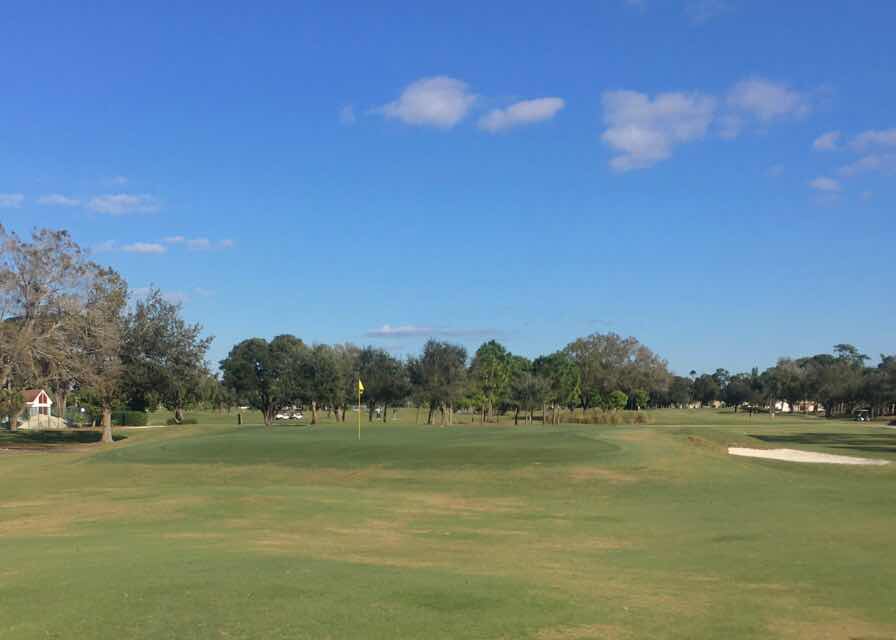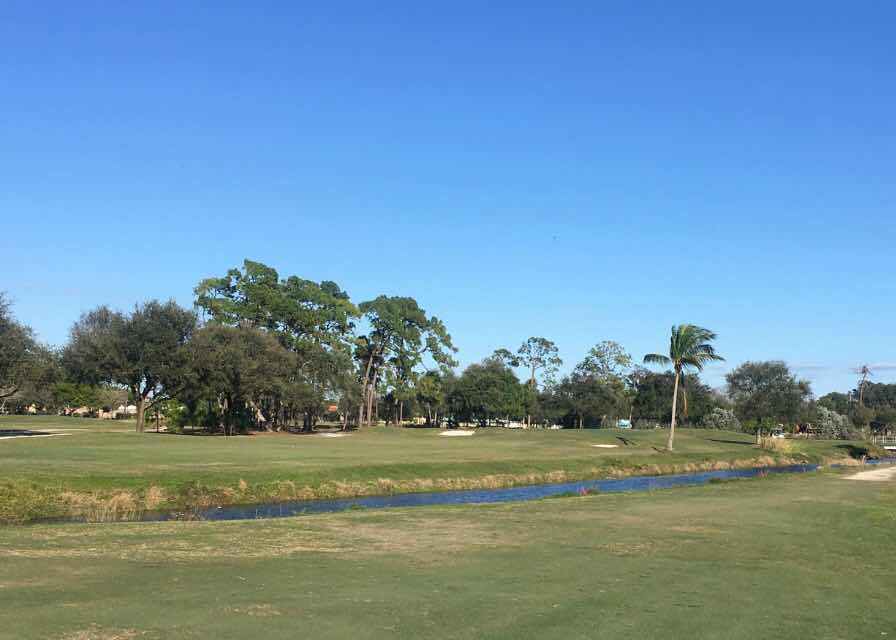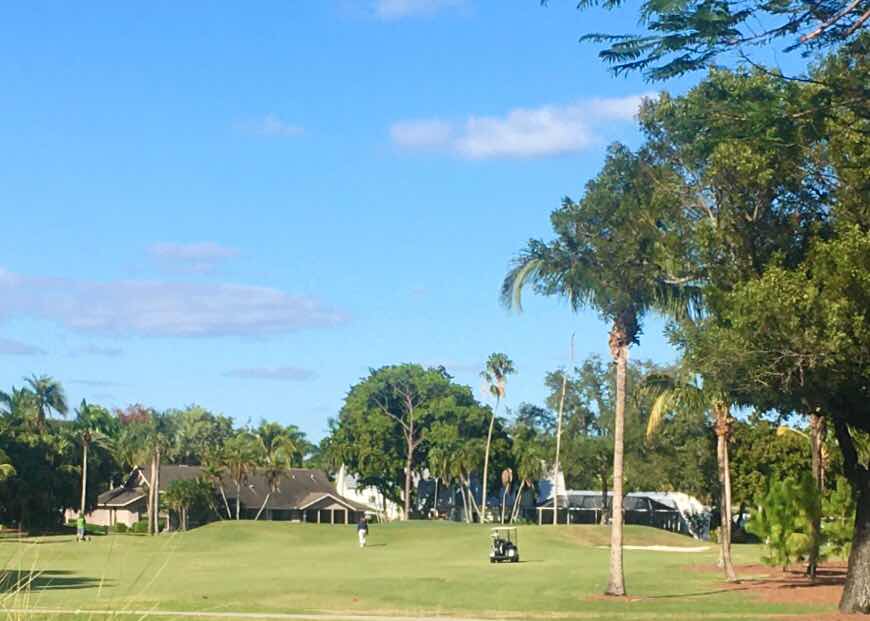Back to the basics is what I was thinking on my annual January Florida trip. The only positive thing I saw in 2020 was the growth of golf’s popularity. It was really amazing to see, and municipal courses have a great opportunity to retain and grow the amount of people who have taken up the game. One of my favorite reads this past year was Golf.com’s Muni Monday articles. So in homage, my first blog in 2021 is a Donald Ross muni called Fort Myers Country Club.
(The 523 yard par five eighth asks golfers to determine if they can carry the canal off the tee. Since it crosses the fairway diagonally, one must know his line and abilities. Laying back is an option but that translates into a much longer third shot.)
Fort Myers was designed in 1917. It has been hosting local tournaments for over a 100 years and many sports personalities have walked its fairways. Spring training brought many of the best baseball players to the first tee. Down the street is the winter homes of Gerald Ford and Thomas Edison. Legend has it that Edison was the one who suggested city council hire Donald Ross to design the course.

(The first green quickly introduces the false fronts and crowned greens one must navigate during their round.)
The spacious property has a canal that crosses it and at the western end is a levy that the superintendent controlled when the water got too high. The Army Corp of Engineers ended that practice to protect the Caloosahatchee River from the canal runoff, and in the process of installing filtering ponds, gave money to the city to renovate the course. Steve Smyers was chosen to do the work and his interpretation of Ross’ design philosophy translates into elevated crowned greens.

(This is the 173 yard par three fourth green. Note the depth of the falloff on the right. A wide variety of shots is on the menu to recover a par.)
Looking at the scorecard, one might scoff at the numbers, but the elevated greens are more than enough to provide the challenge good golfers are seeking. Pin placement is often the difference between a birdie and a bogey. There’s so many slopes on the edges of the greens that players must be leery when hitting approaches. Obviously, chipping, pitching, even putting, are options when trying to save par. Each one requires deft touch and judgement.

(The .372 yard par four third has the canal crossing diagonally in the driving zone. The line of charm drags your eye towards the green but it’s a long carry to the fairway...

...the green is deceptive and much bigger than one sees from the fairway. It’s a birdie opportunity if one hits the proper shot. )
The Fort, as it is affectionately called by the locals, is a nice place for beginners. There’s plenty of grass to keep the ball in play and short game options to encourage fun around the greens. Being in the middle of the city also makes it the perfect place to get together with friends. In fact, I think it was one of the livelier clubhouses I’ve been to, and the Edison’s restaurant seemed to be a popular hangout.

(The 202 yard par three tenth plays just outside Edison’s patio. All eyes are on you as you make a swing.)
Smyers did a good job renovating the course. The greens are beautifully shaped. I like that being short leaves the best chance to save par. I thought that the sides and especially the rear are best avoided. I know Ross is known for having crowned, turrleback greens, but this is the first course that I’ve seen where the slopes were as abruptly as they were. The canal was used several times but on 3,8,18 players had to pick the line they are comfortable carrying. On the eighth, I actually laid back because I couldn’t take the canal on into the wind. On the final hole, it’ll challenge the second shot of the par five.

(The canal is not a shallow or narrow hazard.)
In winter months, one can fly into either Tampa, Sarasota, or Fort Myers. If going into Fort Myers, the Fort is a perfect place to start a golf vacation. It’s welcoming and has a spirited atmosphere that you’ll find enthralling. I give Fort Myers a 5 (good)(worth driving an hour to play).

(Look at that clubhouse. Hard to imagine this is a municipal course.)

(Looking from ten tee to eighteen green through the trees.)

(This picture really makes excites me. Look at the wonderful green surrounds. A good short game is a must to score well.)